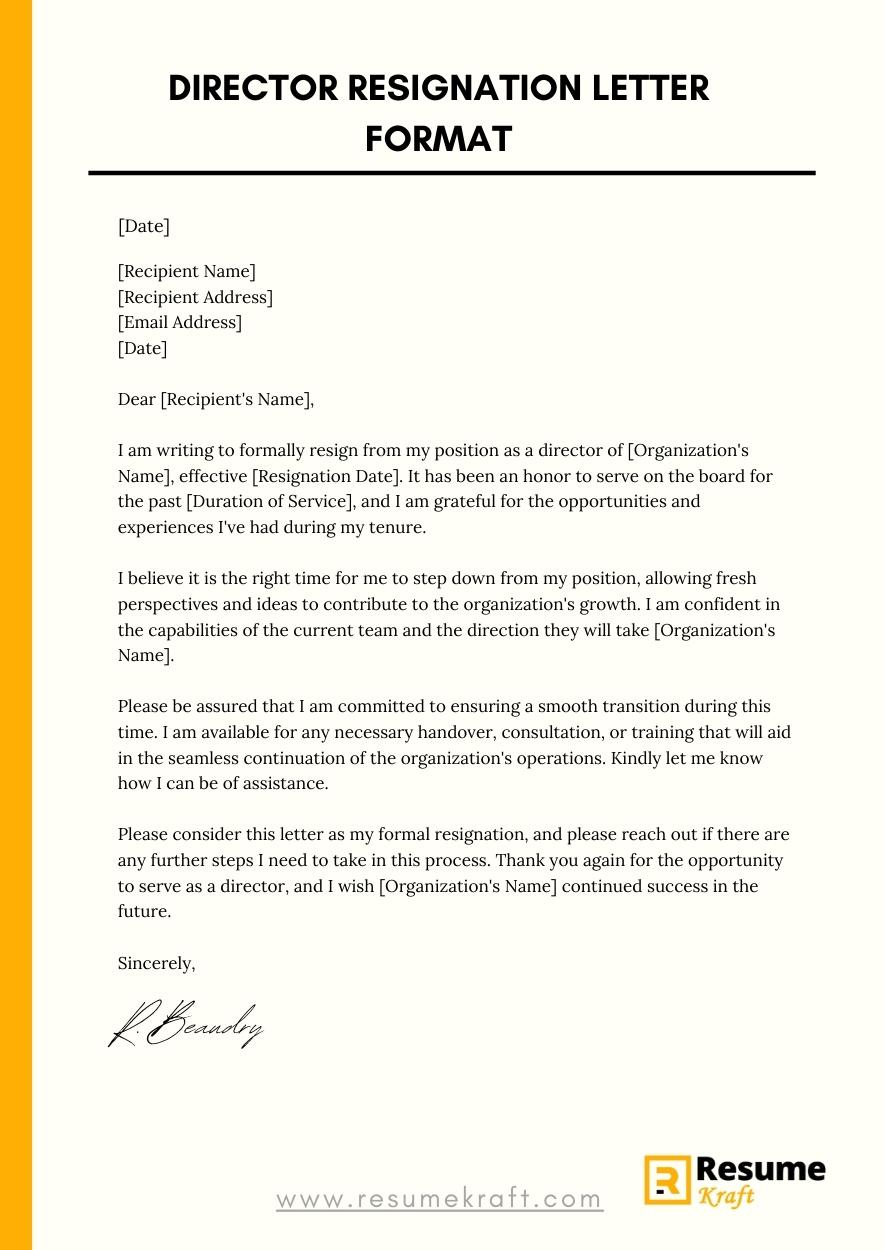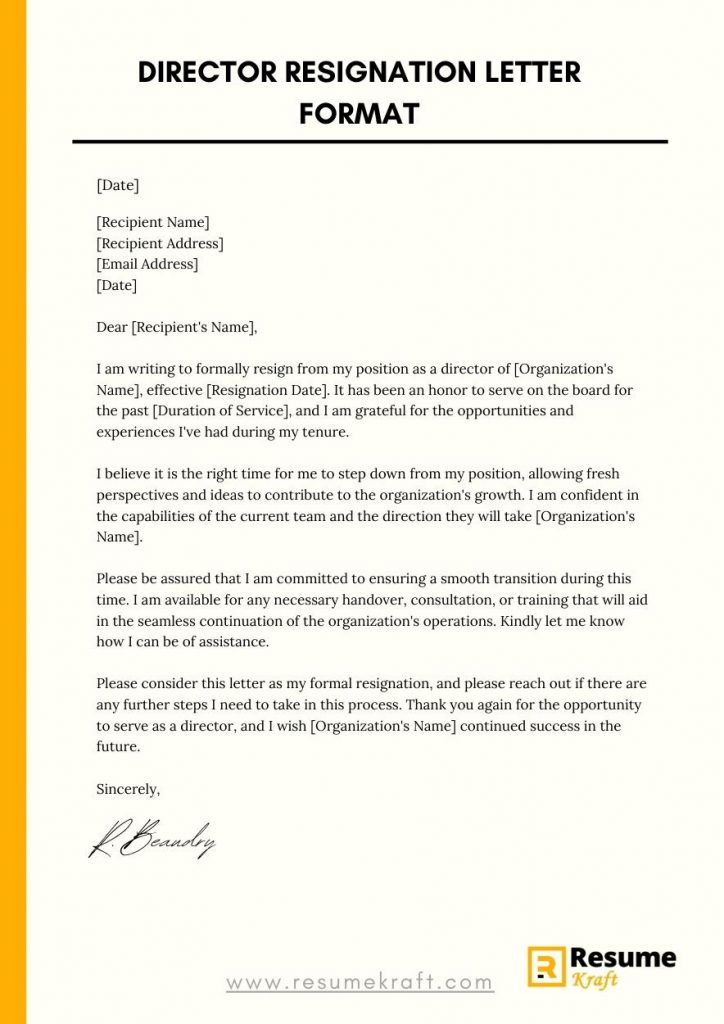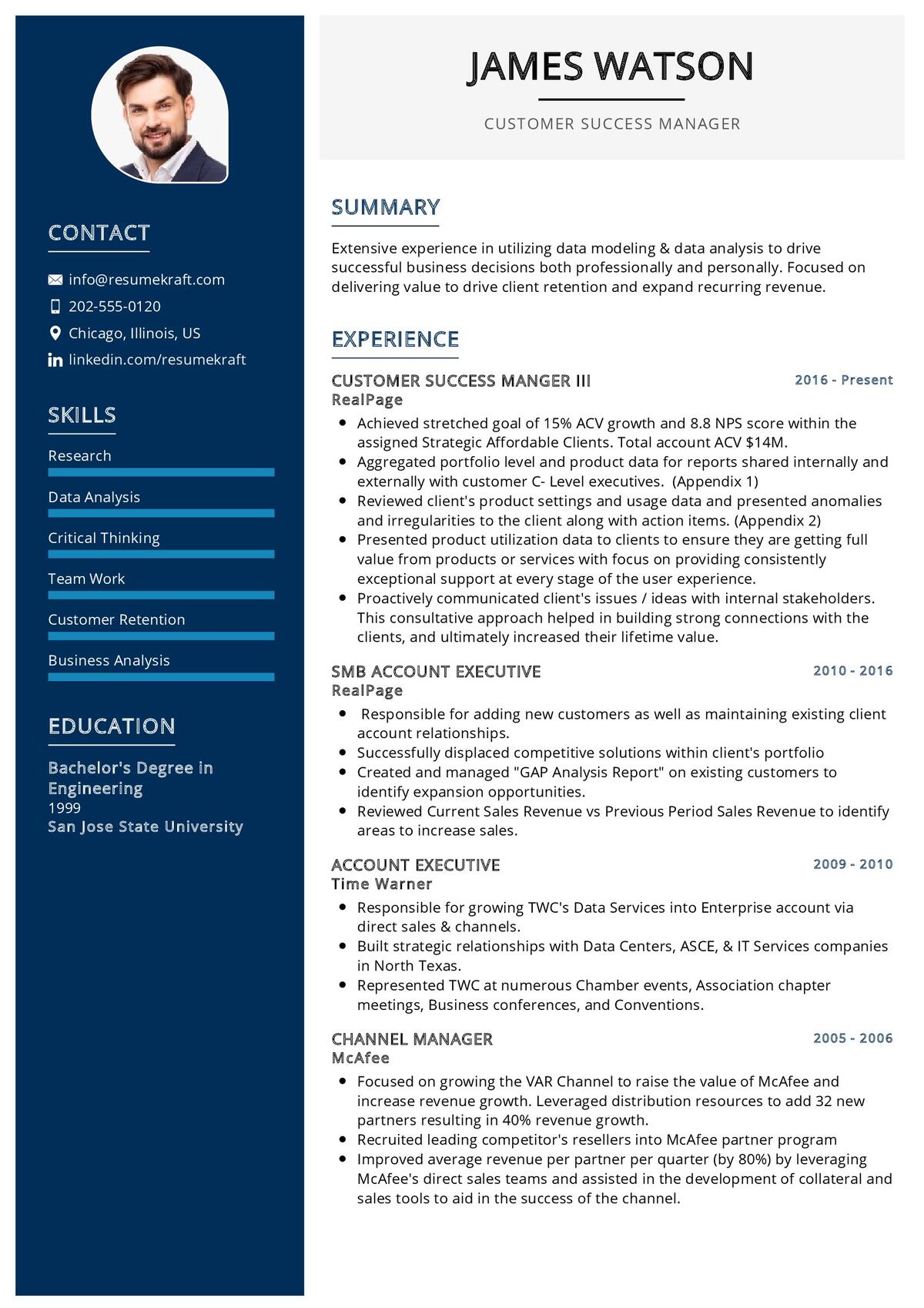
Are you in the position of needing to write a resignation letter as a director? Whether you are stepping down from a corporate board, a nonprofit organization, or any other leadership role, it’s important to leave on a professional note. In this guide, we’ll walk you through the process of writing a director resignation letter. We’ll cover what to include, what not to include, and how to format your letter for maximum impact. We’ll also provide real-life samples to help you craft a resignation letter that reflects your circumstances. So, let’s dive in!
What To Include in a Director Resignation Letter
When writing a resignation letter as a director, it’s crucial to include certain key elements. Here are the essential components to include in your letter:
- Date: Start your letter by including the date of writing.
- Recipient’s Information: Address your letter to the appropriate person or entity, such as the board of directors or the company’s chairman. Be sure to include their full name and job title, along with the organization’s name and address.
- Salutation: Begin your letter with a formal salutation, addressing the recipient using their appropriate title (e.g., “Dear Board of Directors”).
- Statement of Resignation: Clearly state your intention to resign from your position as a director. Be direct and concise in your wording to avoid any misunderstandings.
- Effective Date: Specify the date on which your resignation will take effect. This allows the organization to plan for a smooth transition.
- Reason (Optional): If you feel comfortable sharing the reason for your resignation, you can include it briefly in your letter. However, it is not mandatory to include this information.
- Gratitude: Express your gratitude for the opportunity to serve as a director. Highlight any achievements or positive experiences you had during your tenure.
- Offer to Assist in Transition: Offer your assistance during the transition period to ensure a smooth handover of responsibilities. Mention that you are available for consultation or training, if applicable.
- Closing: Conclude your letter with a formal closing, such as “Sincerely” or “Best regards,” followed by your full name and contact information.
Now that we’ve covered what to include, let’s move on to what you should avoid including in your director resignation letter.
What Not to Include in Your Director Resignation Letter
While it’s important to convey your intentions and gratitude in a director resignation letter, there are certain things you should avoid mentioning. Here’s what not to include in your letter:
- Negative Language: Avoid using negative language or criticizing the organization or its members. Maintain a professional tone throughout the letter.
- Detailed Explanation: You don’t need to provide an extensive explanation for your resignation. Keep your reason brief if you choose to include it.
- Personal Grievances: Avoid discussing personal grievances or conflicts, as it may harm your professional reputation and strain relationships.
- Unprofessional Tone: Ensure that your letter maintains a professional tone. Avoid using slang, informal language, or humor.
- Threats or Ultimatums: Never make any threats or ultimatums in your resignation letter. It’s important to leave on good terms and maintain a positive relationship with the organization.
Now that you know what to include and what to avoid, let’s move on to the formatting of your director resignation letter.
How To Format a Director Resignation Letter
The format of your director resignation letter should follow a professional and formal structure. Here’s a suggested format:
- Your Contact Information: Include your full name, postal address, phone number, and email address at the top of the letter.
- Recipient’s Information: Below your contact information, include the recipient’s full name, job title, organization’s name, and address.
- Date: Indicate the date of writing the letter.
- Salutation: Address the recipient using their appropriate title, followed by a colon (e.g., “Dear Board of Directors:”).
- Body Paragraphs: In the body of your letter, include the essential components mentioned earlier, such as your statement of resignation, effective date, gratitude, and offer of assistance.
- Closing: Conclude your letter with a formal closing, such as “Sincerely” or “Best regards,” followed by your full name and contact information.
Now that you have a clear understanding of how to structure a director resignation letter, let’s explore some real-life samples to provide you with a better idea of how to write your own letter.
Director Resignation Letter Samples

Printed Resignation Letter Sample
[Your Name]
[Your Address]
[City, State, ZIP]
[Email Address]
[Phone Number]
[Date]
[Recipient’s Name]
[Recipient’s Job Title]
[Organization’s Name]
[Organization’s Address]
Dear [Recipient’s Name],
I am writing to formally resign from my position as a director of [Organization’s Name], effective [Resignation Date]. It has been an honor to serve on the board for the past [Duration of Service], and I am grateful for the opportunities and experiences I’ve had during my tenure.
I believe it is the right time for me to step down from my position, allowing fresh perspectives and ideas to contribute to the organization’s growth. I am confident in the capabilities of the current team and the direction they will take [Organization’s Name].
Please be assured that I am committed to ensuring a smooth transition during this time. I am available for any necessary handover, consultation, or training that will aid in the seamless continuation of the organization’s operations. Kindly let me know how I can be of assistance.
Once again, I want to express my sincere gratitude for the trust and support I received during my time as a director. I am proud of the achievements we made together and the positive impact we had on [Organization’s Name] and its stakeholders.
Please consider this letter as my formal resignation, and please reach out if there are any further steps I need to take in this process. Thank you again for the opportunity to serve as a director, and I wish [Organization’s Name] continued success in the future.
Sincerely,
[Your Full Name]
[Your Contact Information]
Email Resignation Letter Example
Subject: Resignation Letter – [Your Full Name]
Dear [Recipient’s Name],
I hope this email finds you well. I am writing to inform you of my decision to resign from my position as a director of [Organization’s Name], effective [Resignation Date].
I would like to express my sincere gratitude for the opportunities and experiences I’ve had during my time as a director. I am proud of the accomplishments we achieved together and the positive impact we had on [Organization’s Name] and its stakeholders.
I believe it is time for a fresh perspective and new ideas to contribute to the continued growth of the organization. I am confident in the capabilities of the current team and the direction they will take [Organization’s Name].
Please be assured that I am committed to ensuring a smooth transition during this period of change. I am available for any necessary handover, consultation, or training that will aid in the seamless continuation of the organization’s operations. Kindly inform me of the steps I should take to facilitate this transition.
Once again, thank you for the opportunity to serve as a director and for your support during my tenure. I have appreciated working with you and the entire team at [Organization’s Name].
Please consider this email as my formal resignation. I would appreciate confirmation of my resignation and any further steps I need to take.
Thank you and best regards,
[Your Full Name]
[Your Contact Information]
Planning to Write a Resume?
Check our job winning resume samples


Key Takeaways
- When writing a director resignation letter, include the date, recipient’s information, statement of resignation, effective date, gratitude, and offer of assistance.
- Avoid negative language, excessive explanation, personal grievances, unprofessional tone, and threats/ultimatums in your director resignation letter.
- Format your director resignation letter with your contact information, recipient’s information, date, salutation, body paragraphs, and closing.
- Use the provided samples as templates, adjusting them to fit your specific circumstances.
Now that you have a solid understanding of how to write a director resignation letter, you can confidently draft your own. Remember to maintain a professional and positive tone throughout. Best of luck with your resignation!
Frequently Asked Questions
1. How much notice should I give when resigning as a director?
It is generally recommended to provide a notice period of at least two weeks when resigning as a director. However, the specific notice period may vary depending on any contractual obligations or legal requirements outlined in your organization’s bylaws or applicable laws.
2. Do I need to provide a reason for my resignation in a director resignation letter?
While it is not mandatory to provide a reason for your resignation, you may choose to include it in your letter if you feel comfortable doing so. However, keep in mind that you should maintain a professional tone and avoid any negative or disparaging comments.
3. Can I resign as a director via email?
Resigning as a director via email is generally acceptable, especially if it is the primary form of communication within your organization. However, it is always a good idea to check your organization’s policies or consult with relevant stakeholders to ensure that email resignation is an acceptable method in your specific situation.
4. Should I offer to assist in the transition when resigning as a director?
Offering your assistance in the transition period is considered a courteous gesture. It demonstrates your commitment to the organization’s success and allows for a smoother handover of responsibilities. However, the extent of your assistance may vary depending on your availability and the needs of the organization.
5. What should be my approach when writing a director resignation letter for a nonprofit organization?
When writing a director resignation letter for a nonprofit organization, it is important to highlight your dedication to the organization’s mission and express your gratitude for the opportunity to contribute. Emphasize the positive impact of your involvement and offer your continued support, if feasible, to facilitate a successful transition.
Conclusion
Writing a director resignation letter is an important step in leaving your position on a professional note. By following the guidelines provided in this article and utilizing the sample resignation letters, you can effectively communicate your decision and maintain positive relationships with the organization. Remember to personalize your letter based on your specific circumstances and maintain a professional and courteous tone throughout the process. Good luck with your resignation!

